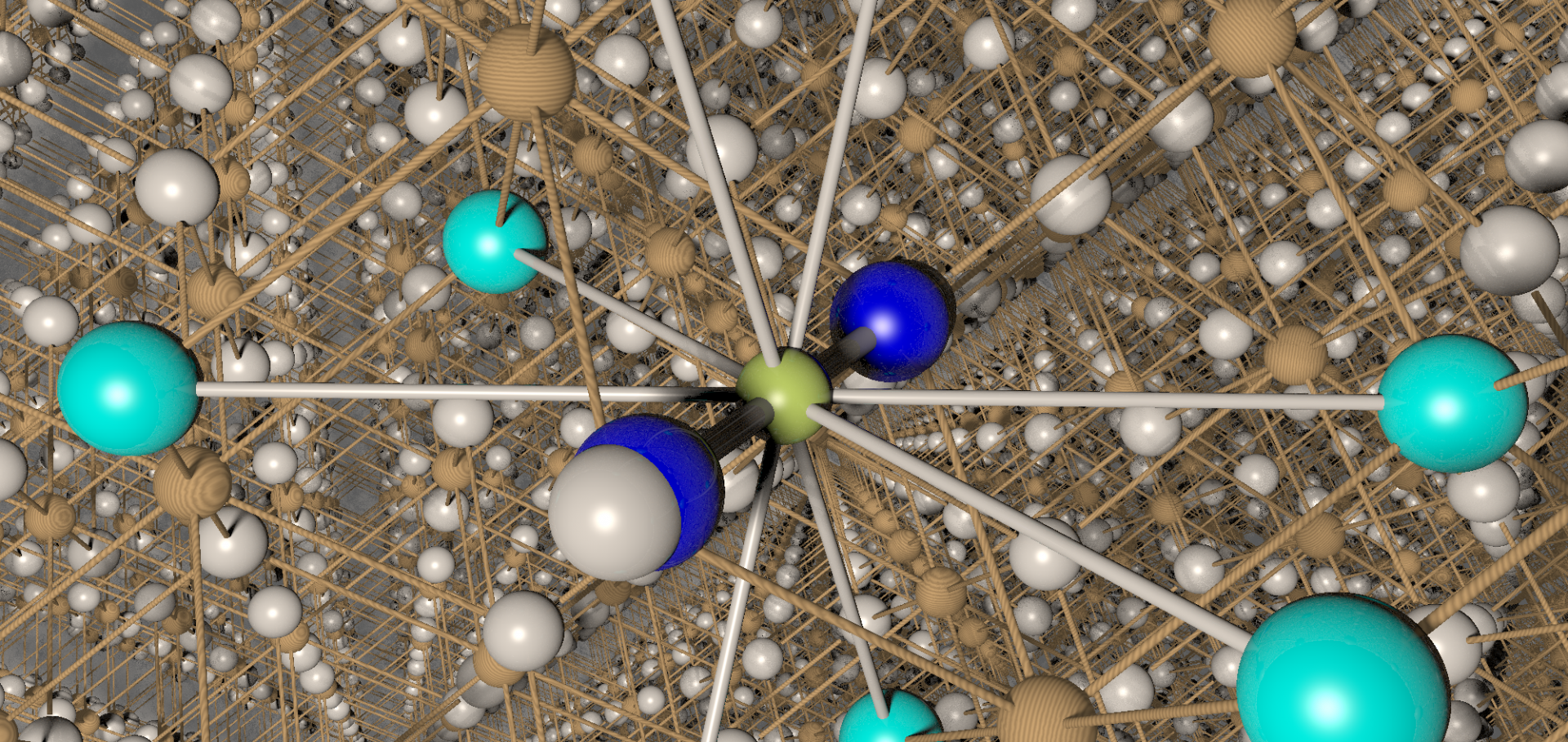Angle-dependent magnetoresistance oscillations and Fermi surface reordering at high magnetic fields in α-(ET)2 KHg(SCN)4
Synthetic Metals 70:1-3 (1995) 825-826
Abstract:
Angle dependent magnetoresistance oscillations (AMRO) have been studied in the charge transfer salt α-(ET)2KHg(SCN)4 for magnetic fields in the range 0 - 30 T. This salt exhibits the onset of antiferromagnetic order at temperatures TN ∼8-10 K and the presence below this temperature of a region of sharp negative magnetoresistance at a field around 22 T known as the "kink". AMRO have been measured in this salt for a wide range of applied fields since the period, amplitude, and nature of the oscillations can be used to directly infer the character of the Fermi surface (FS) as a function of field. The data indicate that a profound change in the band structure occurs at this kink transition; the high field phase is characterised by quasi-2D oscillations from a closed cylindrical FS which is elongated in the c direction; the low field phase appears to be a spin density wave groundstate, with a FS consisting of a sheet (which is quasi-1D in character and tilted at an angle of ∼21° to the b*c plane) and small closed 2D pockets. It is suggested that the breakdown orbits between the pockets and the 1D sheets are able to account for the various Shubnikov-de Haas frequencies observed below the kink. © 1995.mu SR studies of spin excitations in polyaniline
SYNTHETIC MET 69:1-3 (1995) 231-232
Abstract:
Muon techniques have been used to study the spill excitations in polyaniline. The relaxation rate provides information about the spin dynamics. 1D spin diffusion is observed at low temperature in non-metallic materials with a crossover to 2 or 3D behaviour at higher temperature. In metallic polyaniline, in contrast to the undoped cases, the relaxation is rapidly quenched by field at all temperatures. Static and dynamic terms in the relaxation can be separated. The dynamic term shows a high field cutoff which occurs around 25 G at 20 K. This relaxation behaviour indicates a broad spectrum of spin fluctuations concentrated at frequencies in the region below 0.3 MHz. This is a frequency region that is somewhat lower than previously studied by other probes of spin dynamics.μSR studies of spin excitations in poylaniline
Synthetic Metals 69:1-3 (1995) 231-232
Abstract:
Muon techniques have been used to study the spin excitations in polyaniline. The relaxation rate provides information about the spin dynamics: ID spin diffusion is observed at low temperature in non-metallic materials with a crossover to 2 or 3D behaviour at higher temperature. In the metallic polyaniline, in contrast to the undoped cases, the relaxation is rapidly quenched by field at all temperatures. Static and dynamic terms in the relaxation can be separated. The dynamic term shows a high field cutoff which occurs around 25 G at 20 K. This relaxation behaviour indicates a broad spectrum of spin fluctuations concentrated at frequencies in the region below 0.3 MHz. This is a frequency region that is somewhat lower than previously studied by other probes of spin dynamics. © 1995.High-field magnetoresistance oscillations in α-[bis(ethylenedithio) tetrathiafulvalene]2KHg(SCN)4: The effects of magnetic breakdown, exchange interactions, and Fermi-surface reordering
Physical Review B 51:13 (1995) 8325-8336
Abstract:
High-field magnetoresistance measurements have been performed on single-crystal samples of the charge-transfer salt α-ET2KHg (SCN)4 [where ET is bis(ethylenedithio)tetrathiafulvalene] using fields of up to 30 T. We examine the character of the Shubnikov-de Haas oscillations for a range of samples, temperatures, and field regimes to understand the role played by spin splitting and magnetic breakdown effects. Angle-dependent magnetoresistance oscillations (AMRO) in magnetic fields below the kink transition (22 T) indicate that the low-magnetic-field band structure is dominated by a one-dimensional (1D) open section of Fermi surface (FS) inclined at ∼21°to the crystallographic b*c plane; above the kink, the AMRO change in character, indicating that the FS now possesses a 2D closed section in the form of a distorted cylinder. The data are discussed in terms of a recent model of the low-field band structure and give definitive proof that the kink is the signature of a magnetic-field-induced change in the FS. © 1995 The American Physical Society.Ferromagnetic intermolecular interactions and magnetically ordered states in some organic radical crystals
MOL CRYST LIQ CRYS A 271 (1995) 107-114


